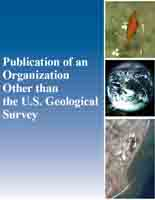Disparate groundwater responses to wildfire
Links
- More information: Publisher Index Page (via DOI)
- Open Access Version: Publisher Index Page
- Download citation as: RIS | Dublin Core
Abstract
Post-wildfire investigations of groundwater response reveal a range of outcomes, varying from substantial increases to notable decreases in recharge and baseflow, with some studies indicating negligible or short-lived effects. This review assesses these varied responses within five critical categories: climate, vegetation, hydrogeology, fire characteristics, and the cryosphere, examining both short-term (within 2 years) and intermediate (2–10 years post-fire) effects. Despite considerable variability, some consistent patterns emerge. For instance, in hydroclimatic settings where water input and evaporative demand cycles are out of sync, post-wildfire groundwater responses tend to be positive (i.e., increased flux or storage), whereas under low fire severity conditions or in vegetation types that quickly recover, groundwater responses tend to be negative (i.e., decreased flux or storage). We synthesize relevant findings into a compendium of testable hypotheses aimed at explaining the spatiotemporal variability in observed post-wildfire groundwater responses. A recurring theme is the critical influence of the pre-wildfire groundwater regime on expected response and recovery. We identify opportunities for specific improvements in post-wildfire monitoring and modeling that would further advance capabilities to predict groundwater response. A key area for further research is understanding how wildfire effects on snow dynamics and other cryospheric processes translate to changes in groundwater.
| Publication type | Article |
|---|---|
| Publication Subtype | Journal Article |
| Title | Disparate groundwater responses to wildfire |
| Series title | WIREs Water |
| DOI | 10.1002/wat2.70029 |
| Volume | 12 |
| Issue | 3 |
| Publication Date | June 19, 2025 |
| Year Published | 2025 |
| Language | English |
| Publisher | Wiley Interdisciplinary Reviews |
| Contributing office(s) | WMA - Earth System Processes Division |
| Description | e70029, 22 p. |


